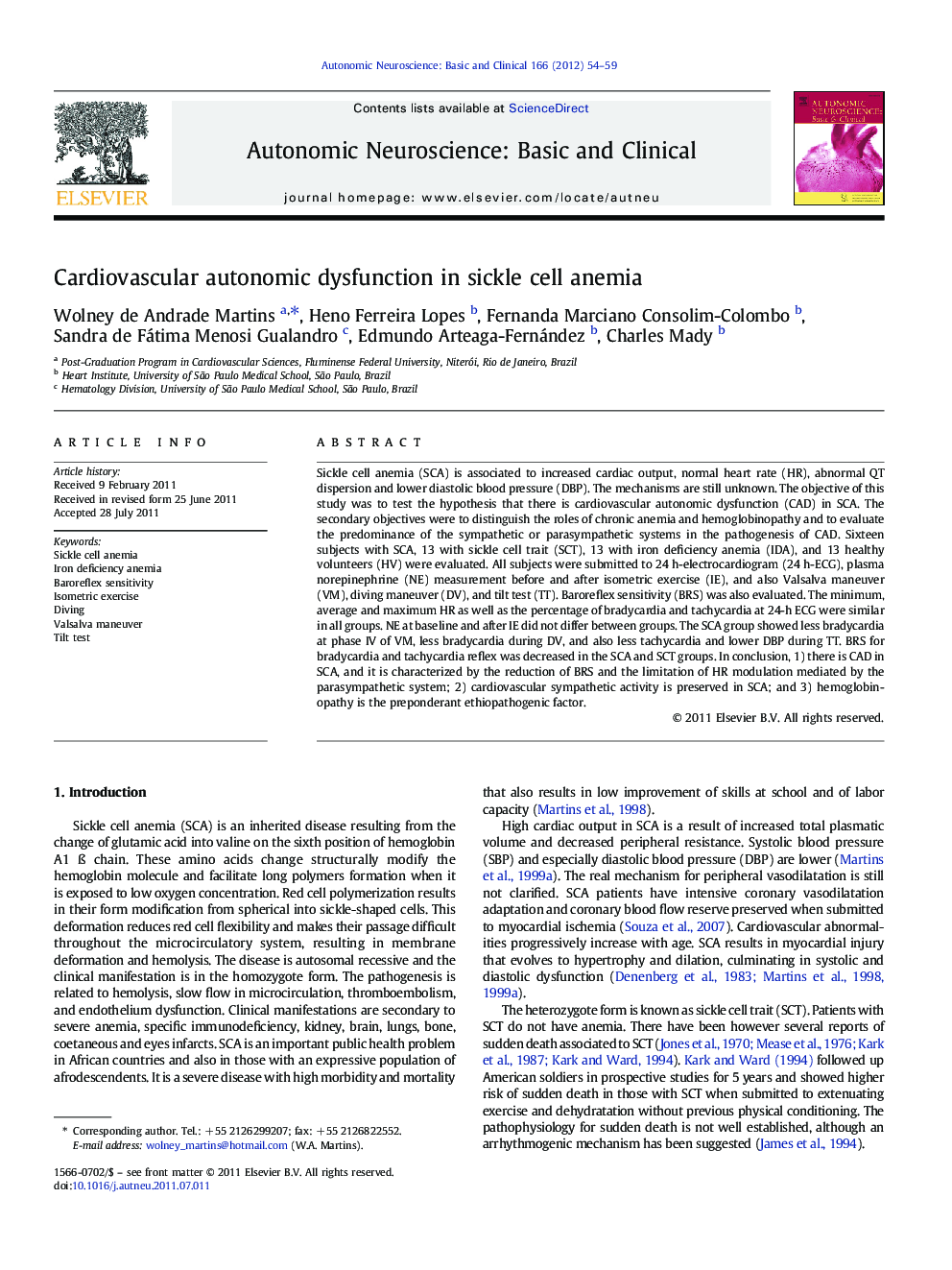| Article ID | Journal | Published Year | Pages | File Type |
|---|---|---|---|---|
| 6004600 | Autonomic Neuroscience | 2012 | 6 Pages |
Abstract
Sickle cell anemia (SCA) is associated to increased cardiac output, normal heart rate (HR), abnormal QT dispersion and lower diastolic blood pressure (DBP). The mechanisms are still unknown. The objective of this study was to test the hypothesis that there is cardiovascular autonomic dysfunction (CAD) in SCA. The secondary objectives were to distinguish the roles of chronic anemia and hemoglobinopathy and to evaluate the predominance of the sympathetic or parasympathetic systems in the pathogenesis of CAD. Sixteen subjects with SCA, 13 with sickle cell trait (SCT), 13 with iron deficiency anemia (IDA), and 13 healthy volunteers (HV) were evaluated. All subjects were submitted to 24Â h-electrocardiogram (24Â h-ECG), plasma norepinephrine (NE) measurement before and after isometric exercise (IE), and also Valsalva maneuver (VM), diving maneuver (DV), and tilt test (TT). Baroreflex sensitivity (BRS) was also evaluated. The minimum, average and maximum HR as well as the percentage of bradycardia and tachycardia at 24-h ECG were similar in all groups. NE at baseline and after IE did not differ between groups. The SCA group showed less bradycardia at phase IV of VM, less bradycardia during DV, and also less tachycardia and lower DBP during TT. BRS for bradycardia and tachycardia reflex was decreased in the SCA and SCT groups. In conclusion, 1) there is CAD in SCA, and it is characterized by the reduction of BRS and the limitation of HR modulation mediated by the parasympathetic system; 2) cardiovascular sympathetic activity is preserved in SCA; and 3) hemoglobinopathy is the preponderant ethiopathogenic factor.
Keywords
Related Topics
Life Sciences
Neuroscience
Cellular and Molecular Neuroscience
Authors
Wolney de Andrade Martins, Heno Ferreira Lopes, Fernanda Marciano Consolim-Colombo, Sandra de Fátima Menosi Gualandro, Edmundo Arteaga-Fernández, Charles Mady,
